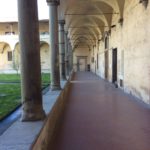The Final Conference of the H2020 project “ReDSHIFT: an holistic approach to space debris mitigation” was organized by the Institute of Applied Physics (IFAC-CNR), National Research Council of Italy based in Tuscany region in Florence, on 13th/14th March 2019. Director Dr. Roberto Pini (see below), heads the institute and is together with Tiziano Mazzoni (Leonardo Company) member of the NEREUS-Standing Committee (advisory body to the Management Board) on behalf of Tuscany region.
Alessandro Rossi (see below) the Scientific Coordinator of the H2020 ReDSHIFT explained the aim of the project that is to address barriers to compliance for spacecraft manufacturers and operators presented now and in the future by requirements and technologies for de-orbiting and disposal of space objects.
NEREUS SG, Roya Ayazi (see below) represented Network’s positions and gave a brief up-date on the latest space policy developments related to Space Situational Awareness (SSA).
In view of the increased challenge of space debris, the EU-program SSA has the mission to monitor ‘space weather’, asteroid trajectories and space debris in Earth orbit and to avoid/reduce related risks. In that perspective, the EU proposed in its Multi-annual Financial Framework for 2021-2027 a budget of 5bn for SSA and Govsatcom together.
In response to this proposal, the rapporteur of the European Parliament, centre-right MEP Massimiliano Salini (EPP, Italy) presented an ambitious plan and called for increasing the budget share to €0.6bn solely for SSA to better manage operations and provide a proper European infrastructure. He argued that secure and guaranteed access to satellite communications is ‘an indispensable tool’ for security actors and should not be interfered by the presence of space debris. Now the Parliament negotiates with the Council to agree on the future space budget (trilogue). A decision is not expected in the current legislative period.
The conference was organized in a medieval setting, a former Benedictine convent founded in 1339, with unique frescos and brought together renowned researchers and scientific community from all over Europe.








